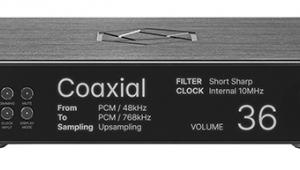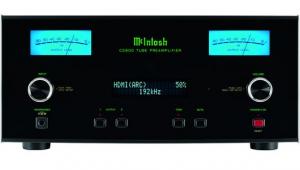Pro Ject Usb Box (£75)
Just one of some 20 Pro-Ject ‘Box’ series components, this little number is essentially an outboard – and self-powered – USB soundcard. Priced at just £75 and built into Pro-Ject’s now-familiar wrap-around casework, the hardware also comes with some software on a mini CD. Dubbed ‘Direct Streaming Technology’ this is an installer for Foobar2000, a media player that, on PCs at least, avoids the default Windows Kernel mixer.
The idea is to stream ripped CD media over USB at its native 44.1kHz and not at a re-sampled 48kHz. Pro-Ject states that its USB Box features a 44.1kHz DAC, but in practice the PCM2702 DAC (with integrated USB interface) used inside will support both 44.1kHz and 48kHz digital inputs. Technically, the USB Box offers a good performance from its 1.1V analogue outputs with low ~0.008% distortion through mid and treble and reasonably flat response, peaking by a mere +0.2dB at 14kHz. The 92dB A-wtd S/N ratio is below the 16-bit standard but this is arguably no bad thing, given the high ~14000psec jitter [see graph, below right]. Naturally, this figure will vary from PC to PC, but I do not anticipate it achieving a good 150psec CD performance!
I used both a desktop PC and Sony VAIO laptop with the USB Box, in both instances enjoying a surprisingly well rounded performance from a variety of discs. Densely-recorded classical works are not necessarily delivered at their most transparent but up-beat discs, like Matthew Ray’s After the Rain [NOVA MAT93CD] sound pretty positive. There was some fuzziness about the Numan-esque synth lines but the drum machine cracked out a solid tune that under-pinned his vocals to good effect. This is no Bel Canto DAC3 on the cheap but ranks as fine value.
As a replacement for your PC’s built-in soundcard, Pro-Ject’s USB Box is certainly worth a spin, although it’s no substitute for the (far costlier) externally-powered USB DACs featured in Hi-Fi News of late. And why no headphone socket?
Originally published in the January 2009 issue



















































